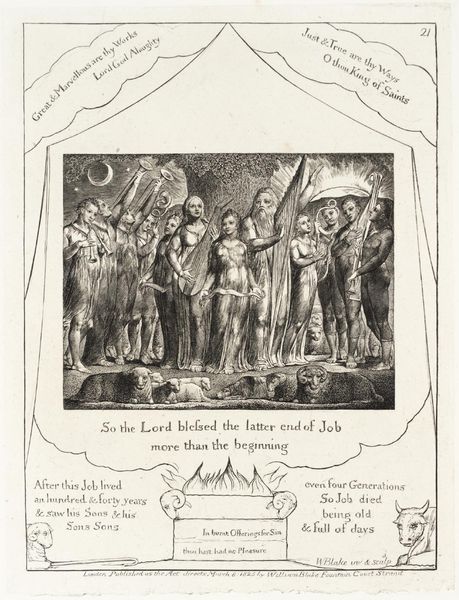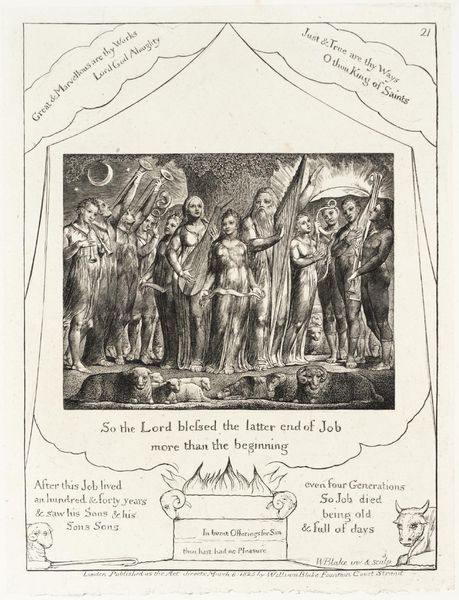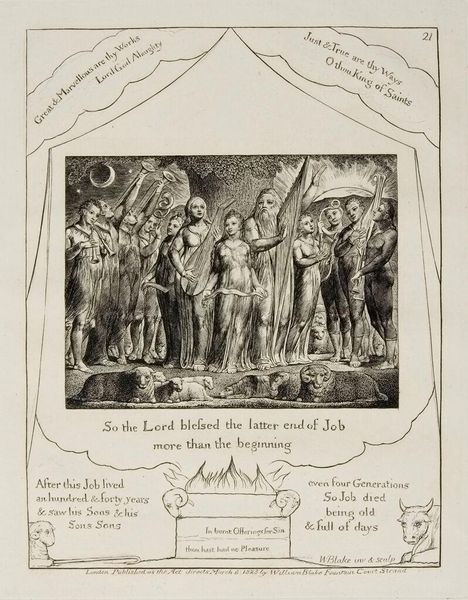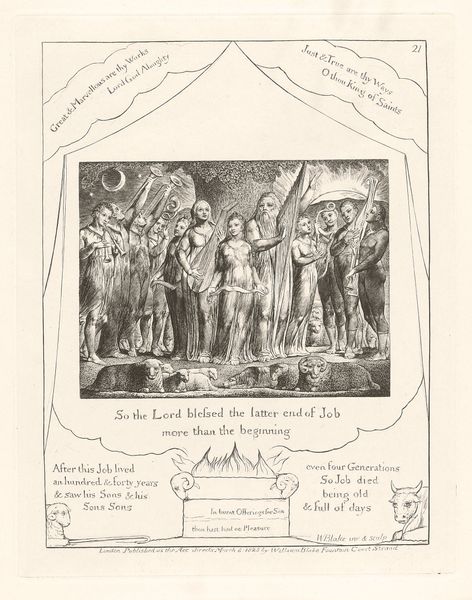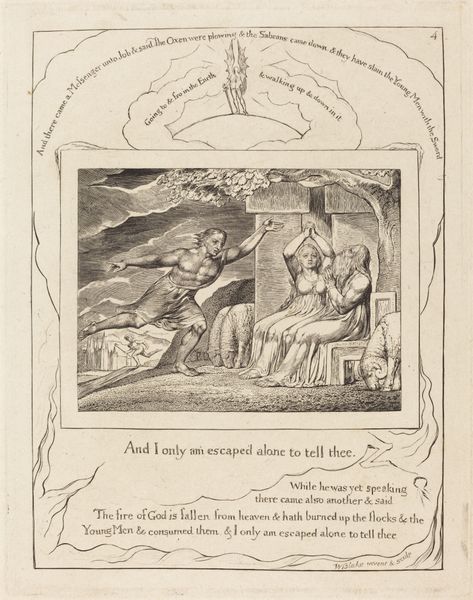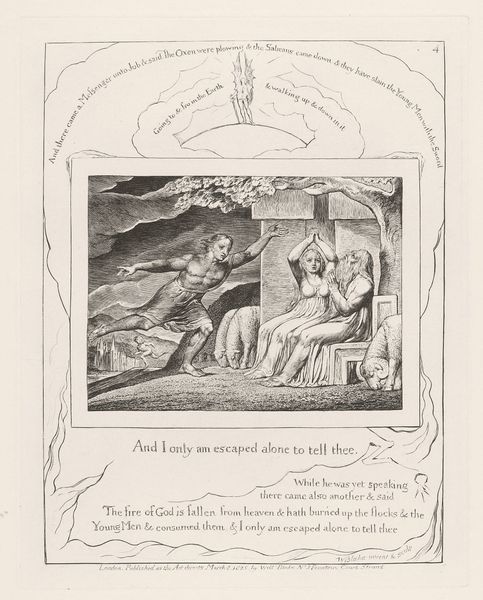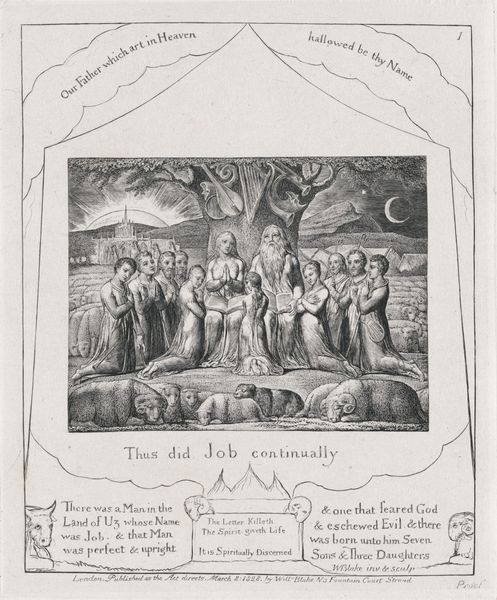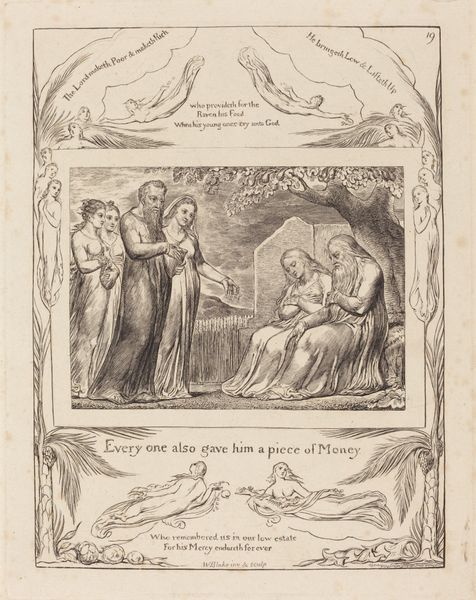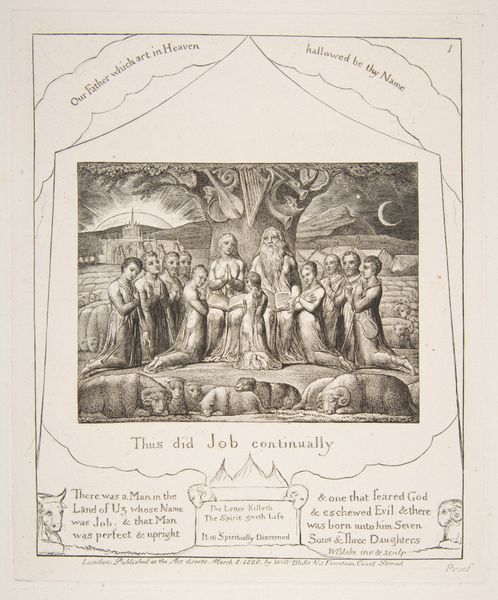
print, engraving
#
narrative-art
# print
#
figuration
#
romanticism
#
line
#
history-painting
#
engraving
Dimensions: plate: 21.6 x 16.8 cm (8 1/2 x 6 5/8 in.) sheet: 25.4 x 25.2 cm (10 x 9 15/16 in.)
Copyright: National Gallery of Art: CC0 1.0
This print, "Job and His Wife Restored to Prosperity," was made by William Blake, probably around 1826, using an engraving process. Think of it: Blake would have taken a copper plate and, using tools called burins and scrapers, incised lines into the metal to create the image. These lines hold the ink, and when pressed onto paper, they transfer the design. It’s a painstaking, physically demanding method, requiring immense skill and control. The linear quality you see throughout the composition, the way the figures are delineated, it’s all a direct consequence of this process. The image almost seems to glow, this is due to the texture created by the many tiny lines that Blake cut into the plate. Blake was deeply invested in the idea of the artist as a craftsman, someone who controls every aspect of production. In this era of increasing industrialization, he was pushing back, asserting the value of individual labor and artistic vision. The very act of engraving was, for Blake, a form of resistance.
Comments
No comments
Be the first to comment and join the conversation on the ultimate creative platform.
